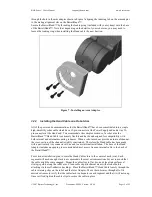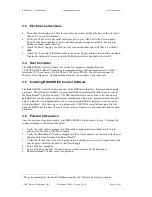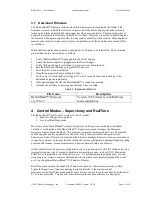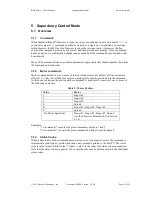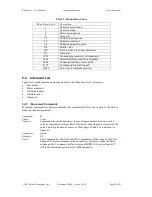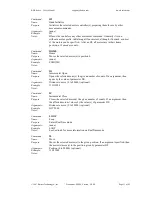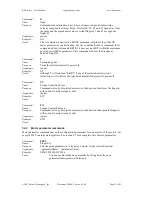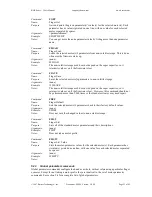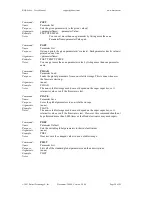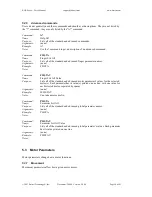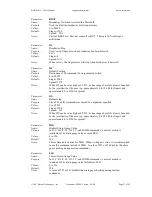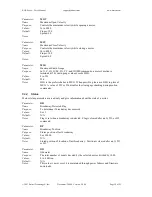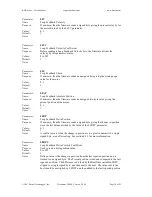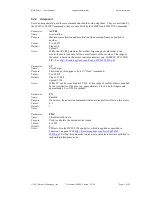
BH8-Series – User’s Manual
www.barrett.com
© 2007 Barrett Technology®, Inc.
Document: D3000, Version: AF.00
Page 17 of 82
.
3.7 Download Firmware
The BarrettHand™ firmware resides on board the electronics located inside the Hand. This
firmware is stored in RAM that receives its power from the Power Supply when the system is
turned on and from an embedded super capacitor when powered down. This super capacitor is
designed to maintain the firmware in RAM for two days. However, especially in humid weather,
the memory will begin to degrade after two days and eventually will be cleared. Since degraded
memory may result in erratic control, please reload firmware if the hand has been turned off for
several days.
When the firmware has been cleared or degraded, it will need to be reinstalled. The download
process takes only a few minutes, as follows:
1.
Verify the BarrettHand™ is plugged into the Power Supply.
2.
Verify the host computer is plugged into the Power Supply.
3.
Verify the Power Supply is attached to a power source and turned on.
4.
Run the BHControl Interface program BHControl.exe.
5.
Press the Start Download button
6.
Open the appropriate file according to Table 1.
7.
Cycle power: Switch the Power Supply off, wait 5 seconds, then turn it back on. The
download begins automatically.
8.
After downloading the file, the BarrettHand™ is ready for operation.
9.
Initialize the software by pressing the Initialize Library button.
Table 1 - Firmware File List
File Name
Description
BarrettHand™ Firmware
v4_33.S19
Version 4.33 Firmware with RealTime
mode capabilities.
4 Control Modes – Supervisory and RealTime
The BarrettHand™ can be used in either of two (2) modes:
1.
high-level Supervisory mode or
2.
low-level RealTime mode.
Most users of the BarrettHand™ can rely exclusively on Supervisory mode since it handles
virtually every function of the BarrettHand™. Supervisory mode leverages the Motorola
microprocessor onboard the Hand. This processor interprets incoming Supervisory Commands
and then applies control signals across the set of four (4) motion-control microprocessors.
Supervisory mode allows you to command individual or multiple motors to close, open, and move
to specific positions; it also provides for setting the various configuration parameters and reporting
positions and torques (torque measurement requires optional strain-gage sensors).
At the simplest level, Supervisory mode allows you to type and receive ASCII text characters on a
terminal (using any type of computer hardware or operating system, such as UNIX, Macintosh,
PalmPilot, and proprietary robot controllers, etc.). To automate grasping applications, you can
write programs, scripts, or macros that send and receive these text characters through the serial
port (e.g. the optional BarrettHand™ C-Function Library).
RealTime mode extends the capability of Supervisory mode. Sometimes users may wish to
bypass the Supervisory functions and apply control directly to the motion-control
microprocessors. RealTime mode enables users to close control loops in real time from their host
PC or robot controller. This benefits users interested in real-time control via a data-glove,













